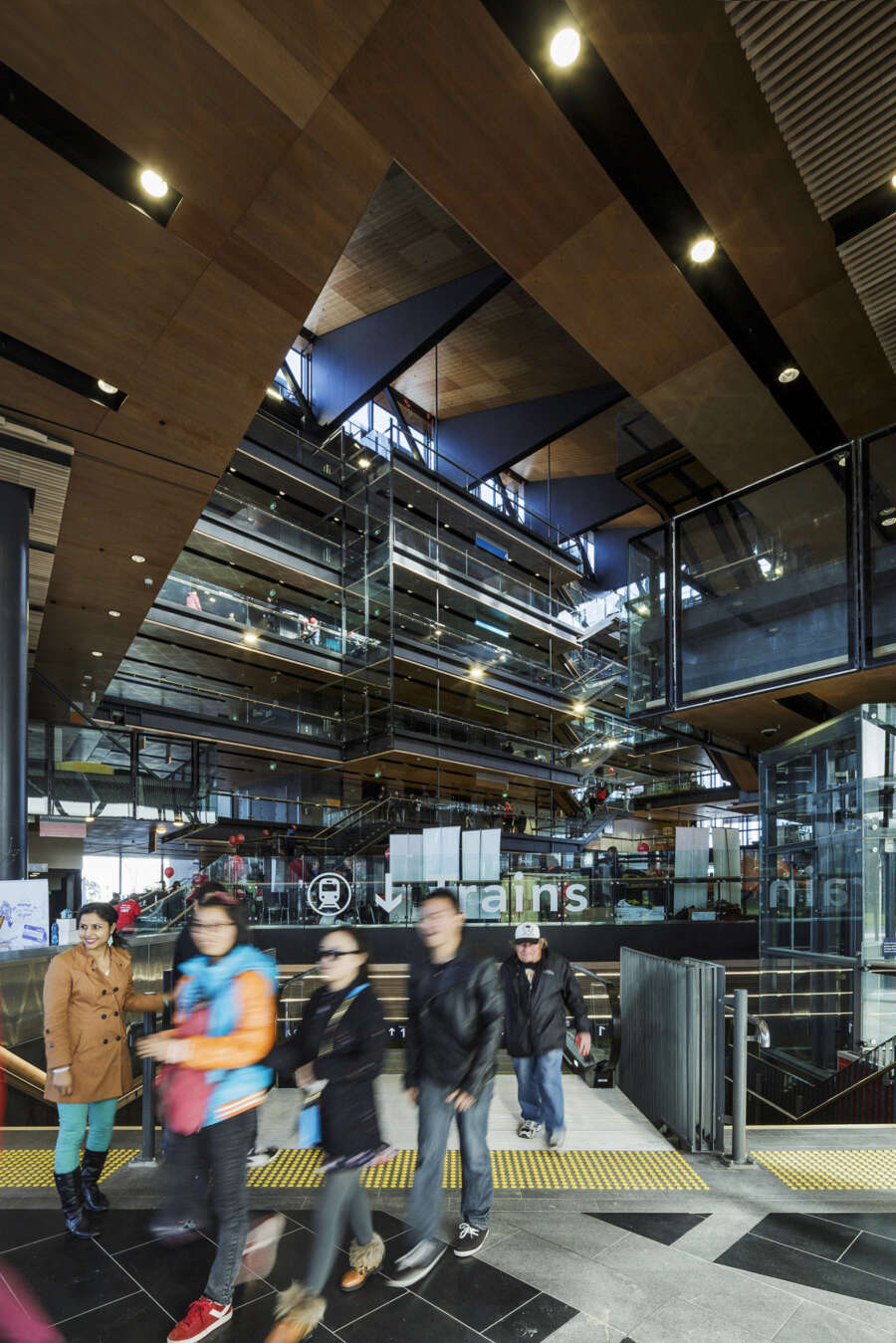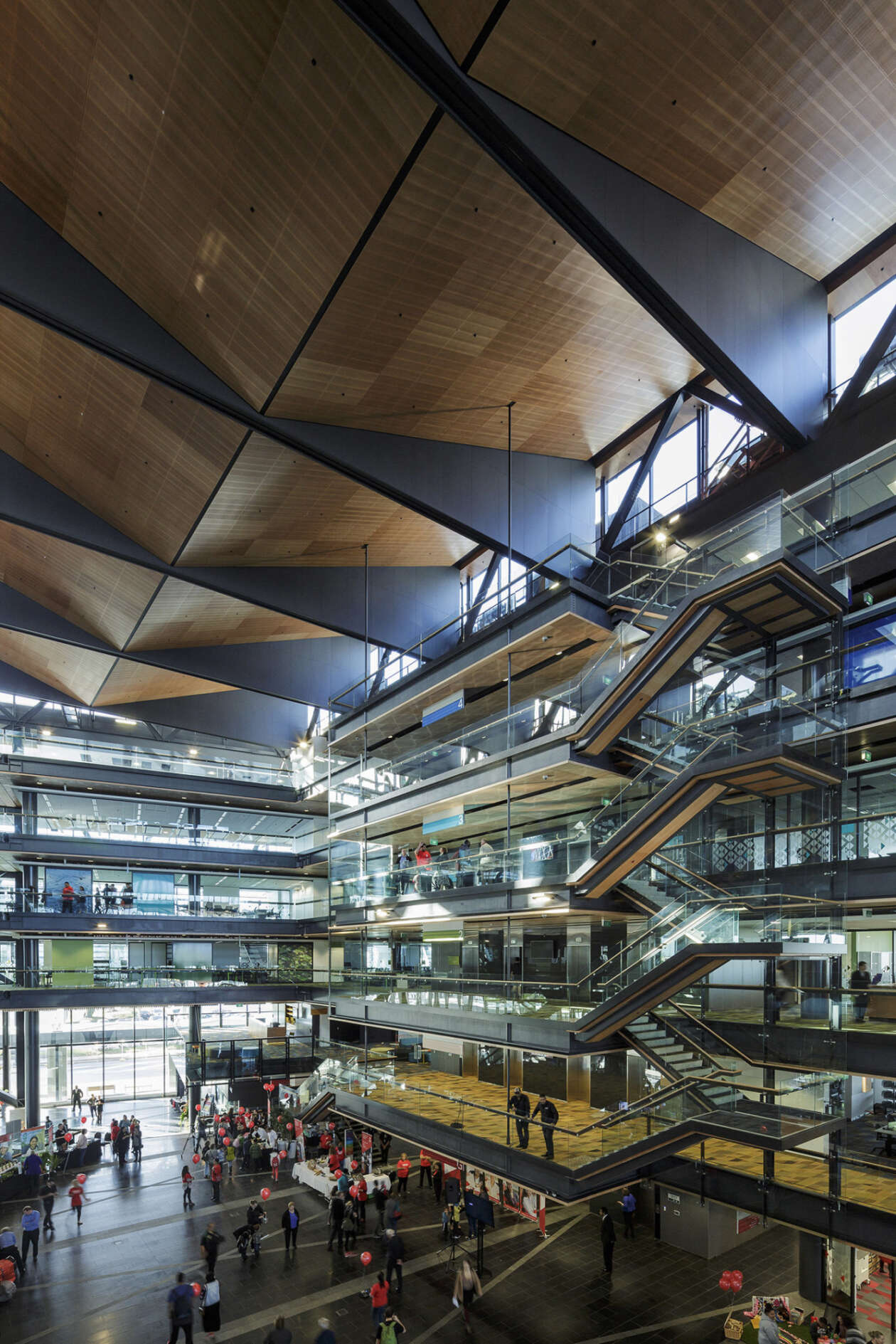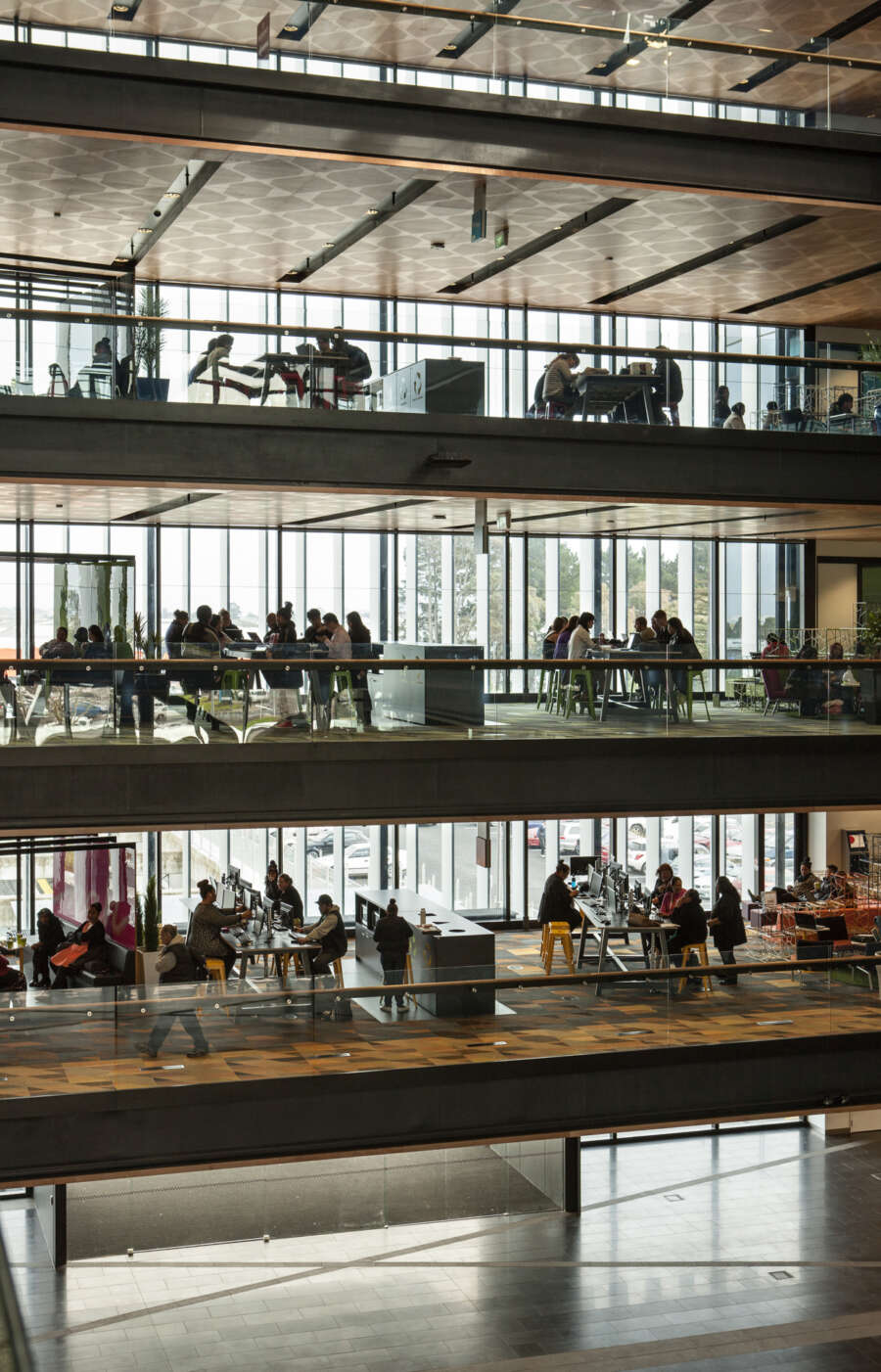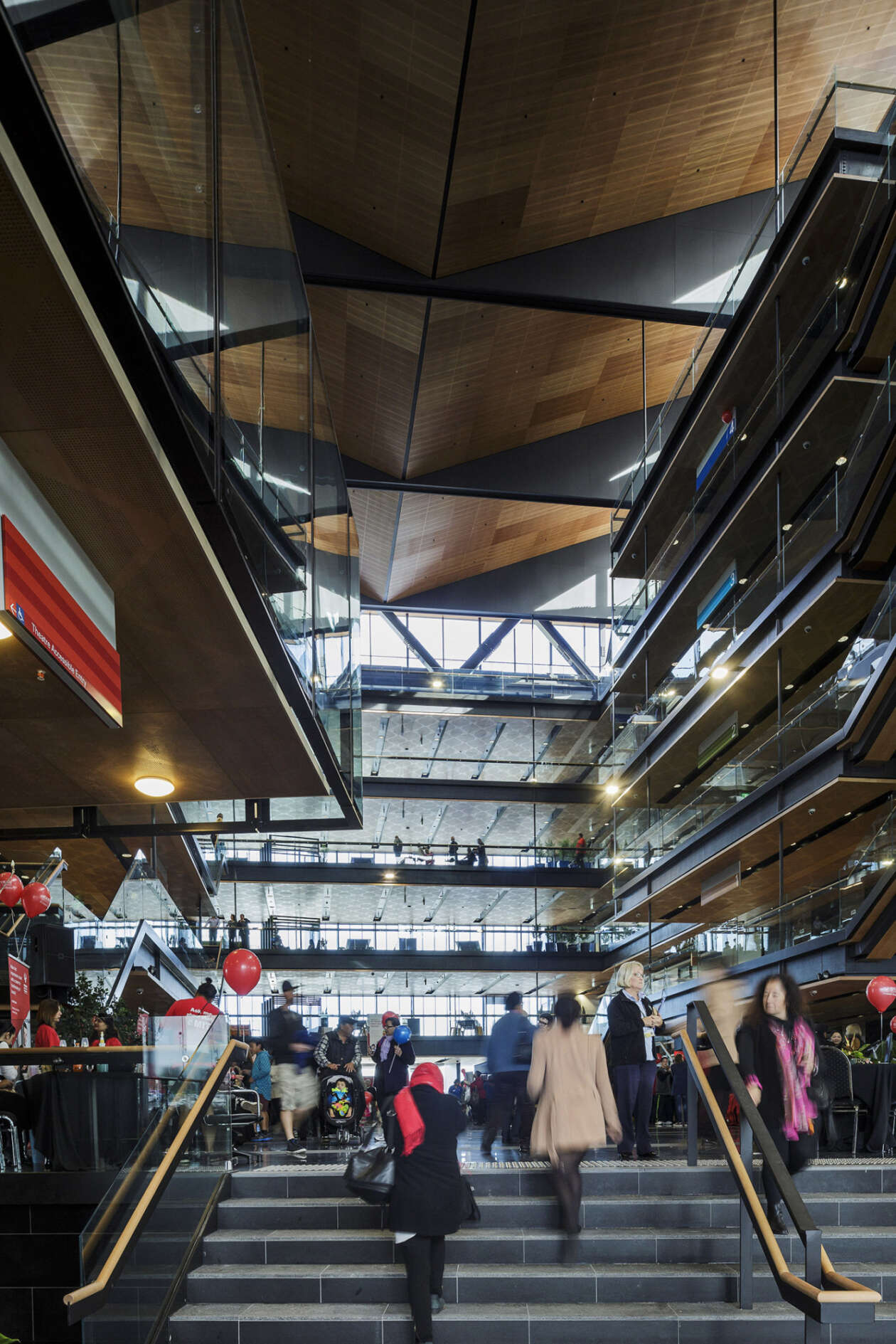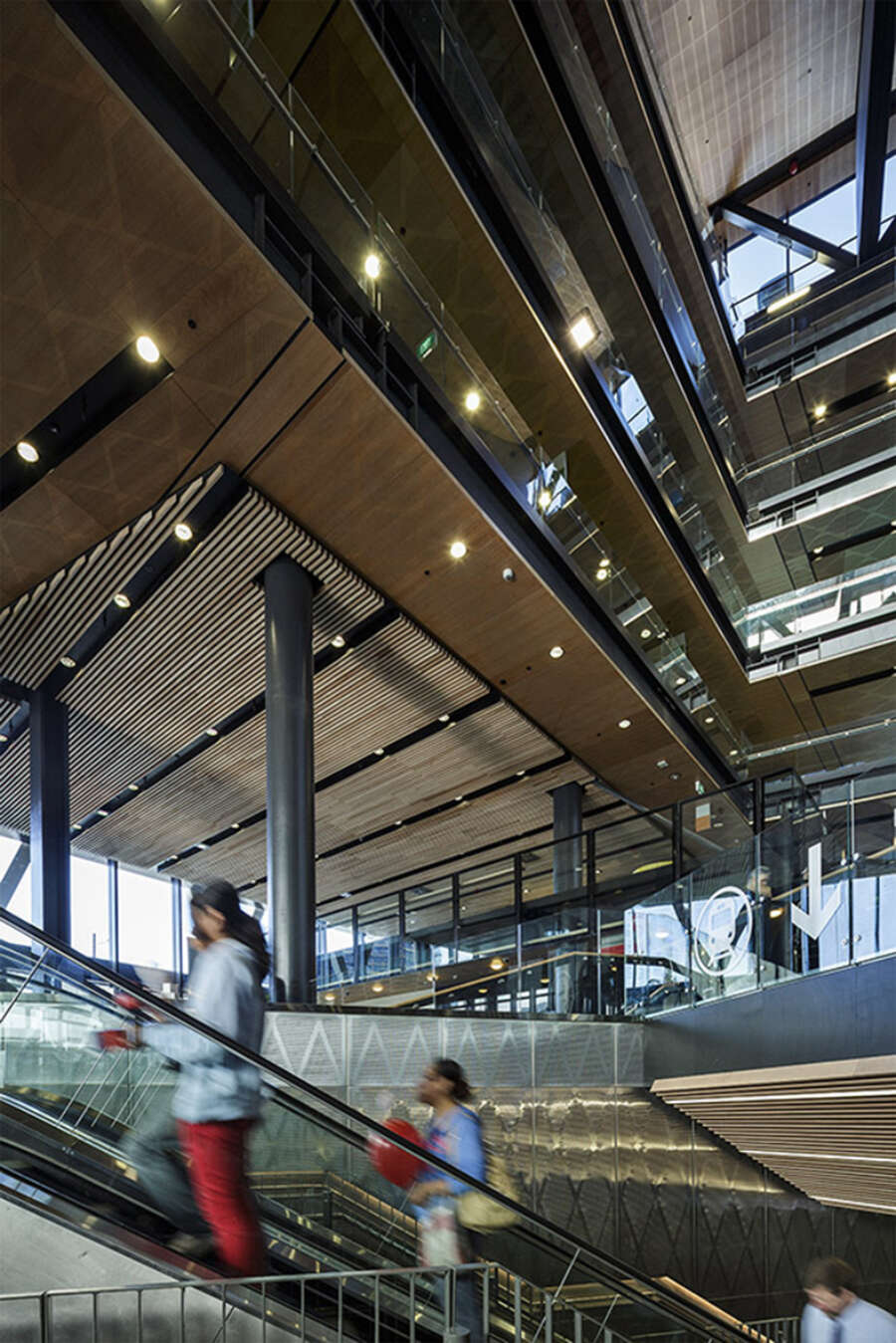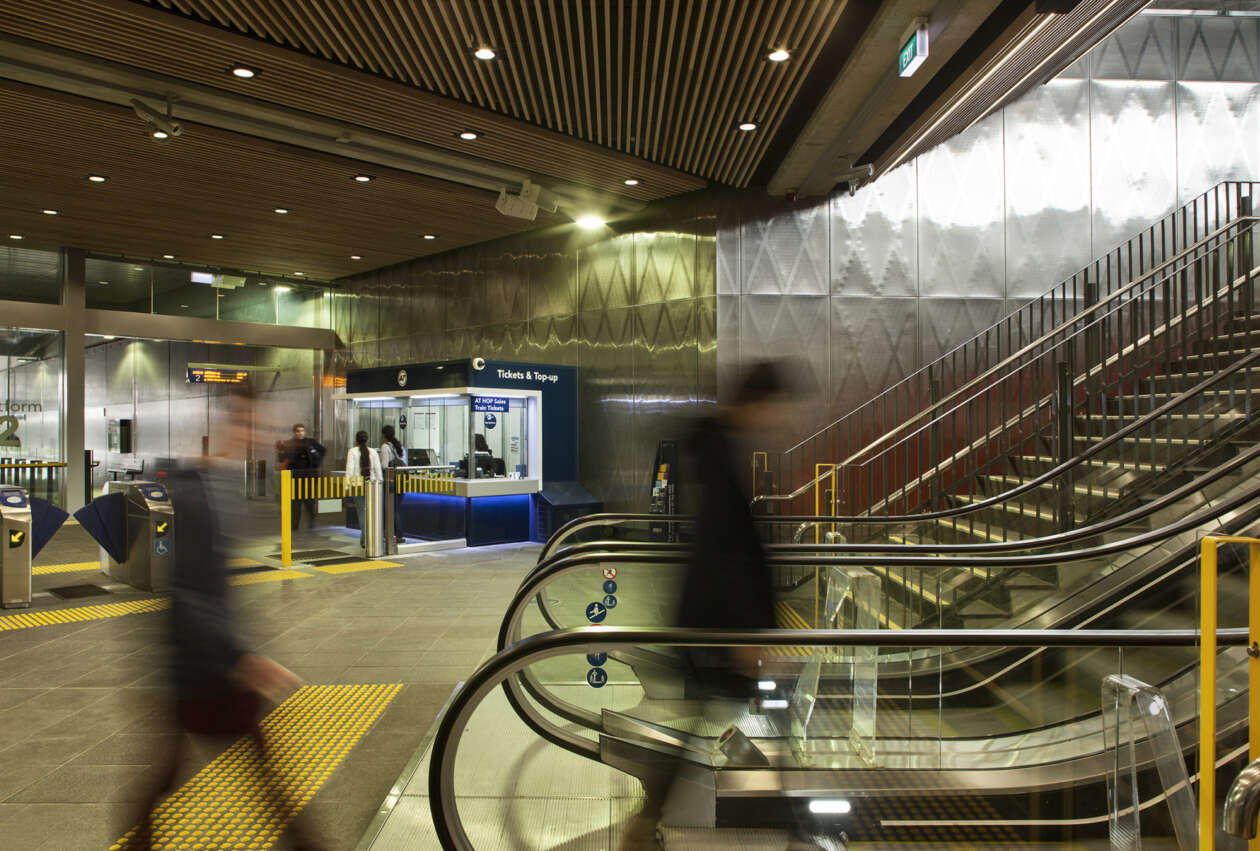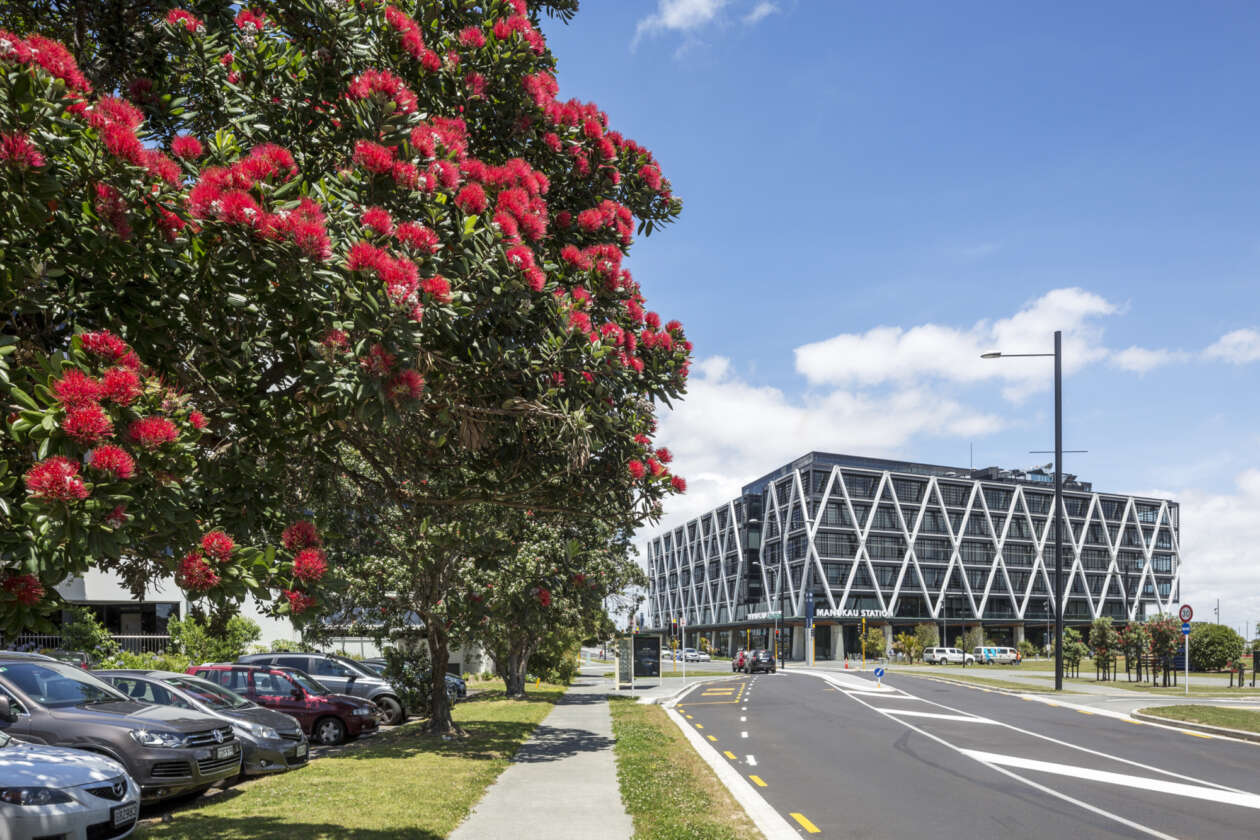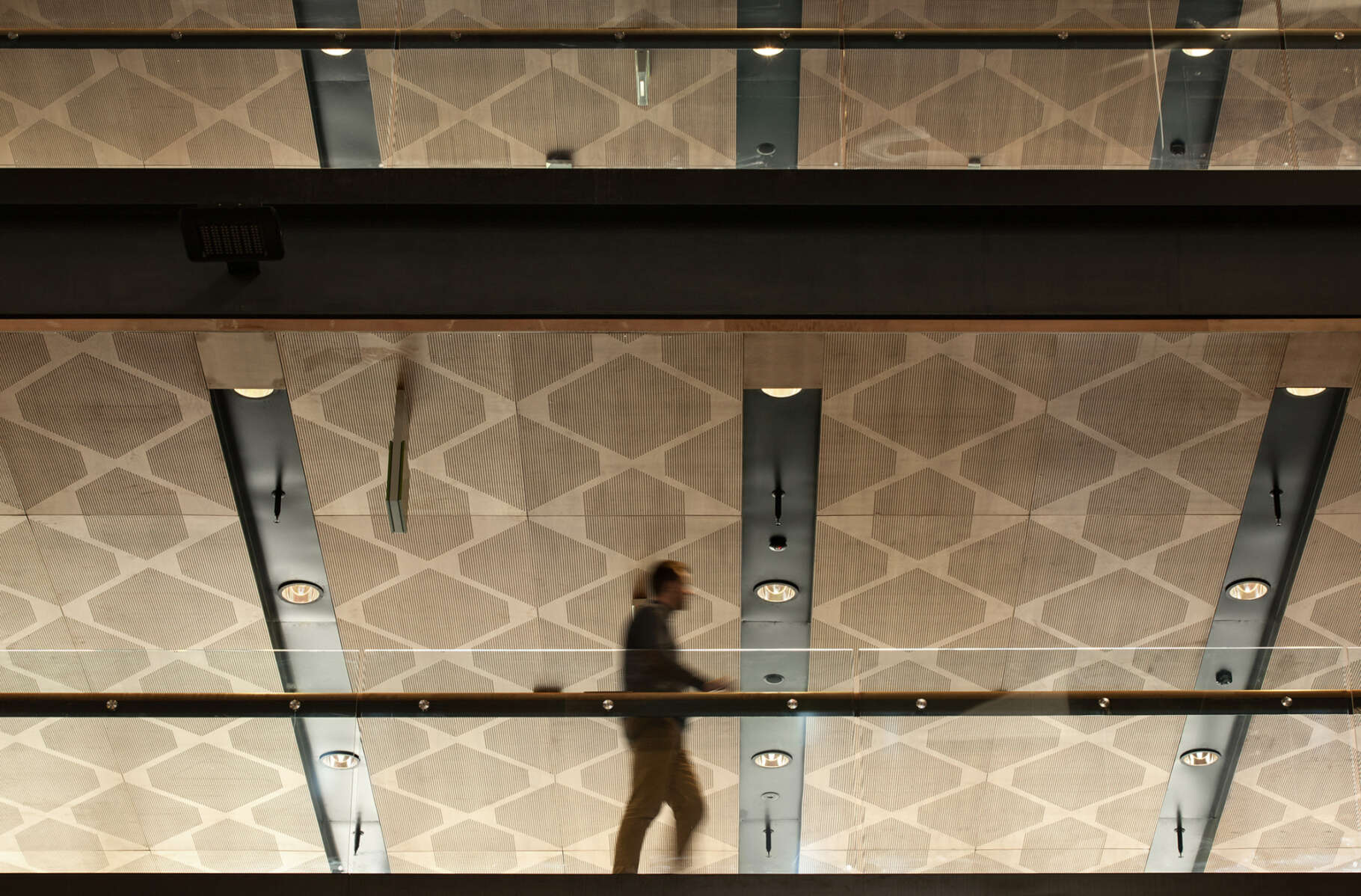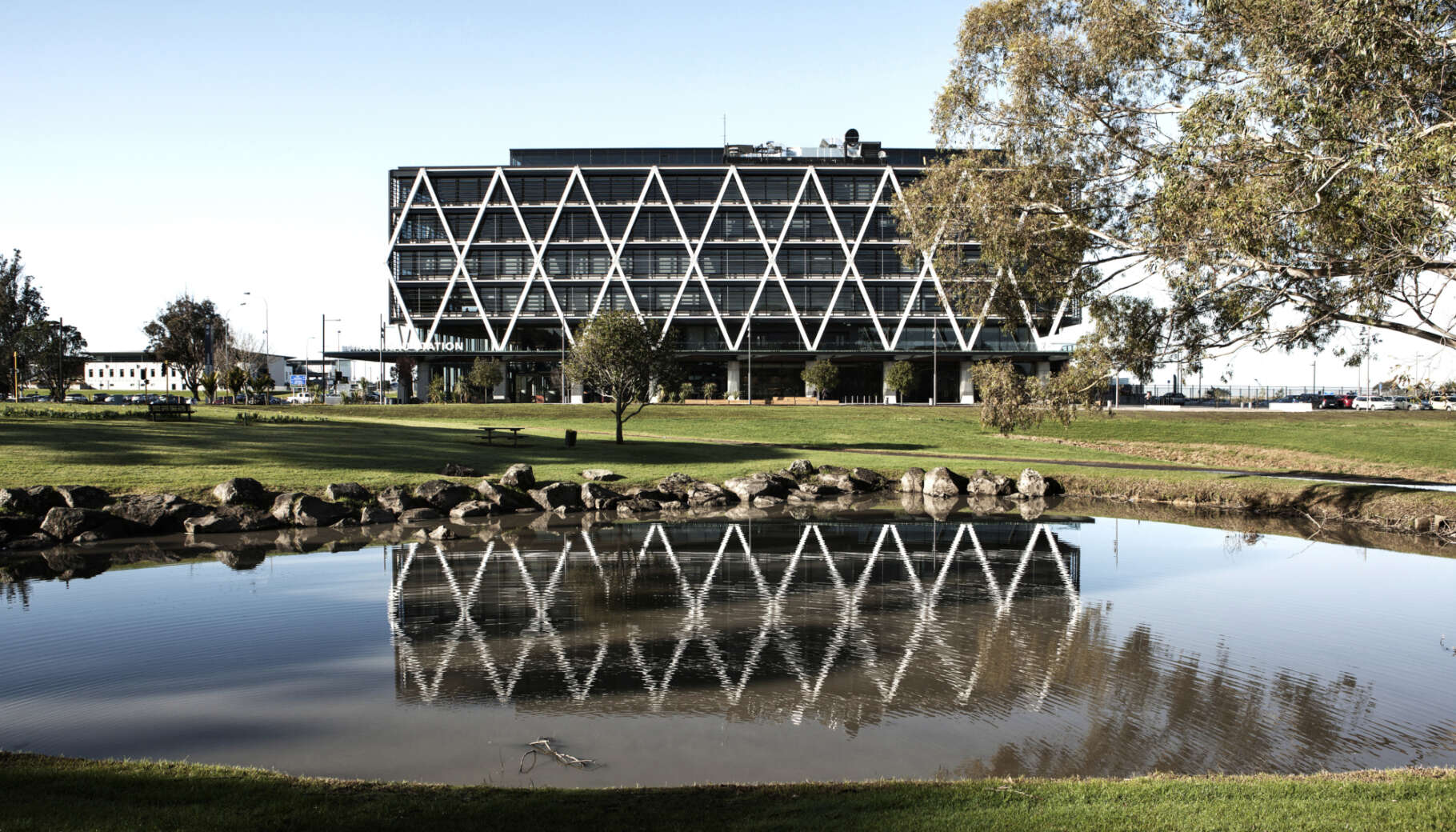By bringing people of all backgrounds through in a natural way, the integrated design helps break down traditional barriers to tertiary education.
This combination of education and transportation facilities is unique within New Zealand and represented a major opportunity for increased participation in tertiary education by the people of Manukau and the broader Auckland region.
The focus of ongoing design work has centred on producing the best possible learning environment while also bringing commuters and the people of Manukau City into the heart of MIT, exposing its programmes to the widest possible audience. At a strategic level, the core result targeted is significantly improved participation and learning outcomes and associated social and economic benefits for the Manukau region and New Zealand as a whole.
At a functional level, the proposal achieves the best operational balance for the project partners. A high level of campus identity and flexibility is achieved for MIT while also creating a high profile and functional rail and bus interchange. All major stakeholders share a common objective to achieve the level of integrity and clarity expected of a major piece of public infrastructure.
The building comprises three regular floorplates arranged around a 6 storey central enclosed atrium space, creating a common ‘campus heart’ which signifies the first moment of arrival for students and commuters alike. The building configuration responds directly to the location of the existing rail trench which dictates to a high degree the location of load bearing structural elements.
The typical floorplate is the direct translation of MIT’s desire for open flexible spaces - creating a highly efficient, open and interconnected ‘learning landscape’ which is flexible enough to accommodate change in teaching pedagogy over the life of the building.
